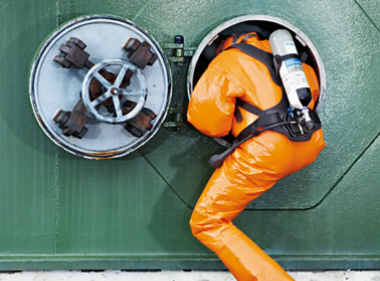.jpg)
.jpg)
The course will cover:
By the end of this course delegates will be able to:
Team Leaders, Managers, Line Managers, Supervisors, Team Leaders, Project Managers, Control Center Operators and Supervisors, Emergency Dispatchers, Security Personnel and CCTV Operators, HSE Officers, HSE Personnel, HSE Professionals, Emergency Response Team Members, HSE Managers and Auditors, Health & Safety and Environmental Professionals, Coordinators, Specialists and other full-time safety practitioners, Fire Officers, Loss Control Managers, Security Directors and Managers, Security Supervisors, Facilities Directors and Managers, HR and Administrative Managers with responsibility for security, Project Managers, Safety Inspectors, Plant Managers and Supervisors, Incident Control Point (Forward Control) Team Members, Supervisors, Advisors, Auditors, Laboratory Personnel, Emergency Personnel, Maintenance Personnel.
BTS attendance certificate will be issued to all attendees completing minimum of 75% of the total course duration.
| Code | Date | Venue | Fees | Register |
|---|---|---|---|---|
| HSE138-01 | 11-01-2026 | Dubai | USD 5450 | |
| HSE138-02 | 12-04-2026 | Manama | USD 5450 | |
| HSE138-03 | 09-08-2026 | Amman | USD 5450 | |
| HSE138-04 | 22-11-2026 | Dubai | USD 5450 |

On average, work in confined spaces kills many people every year across a wide range of industries, from those involving complex plant through to simple storage vessels. In addition, a number of peopl ...

Confined spaces can be very dangerous places unless proper procedures are followed before and during entry. Working in confined spaces is an everyday occurrence in many occupations. When these spaces ...

The taunt of Production versus Safety has been with companies for many years. This barrier must be overcome. The Occupational Safety and Health Administration (OSHA), is one of the world’s leading bod ...
.jpg)
Emergency responders are those people who may be the first emergency personnel to arrive at hazardous material/waste incidents and are expected to take some evasive actions to protect the people or th ...
Providing services with a high quality that are satisfying the requirements
Appling the specifications and legalizations to ensure the quality of service.
Best utilization of resources for continually improving the business activities.
BTS keen to selects highly technical instructors based on professional field experience
Since BTS was established, it considered a training partner for world class oil & gas institution
1st floor, Incubator Buildingو Masdar City, Abu Dhabi, UAE
Sun to Fri 09:00 AM to 06:00 PM
Contact Us anytime!
Request Info